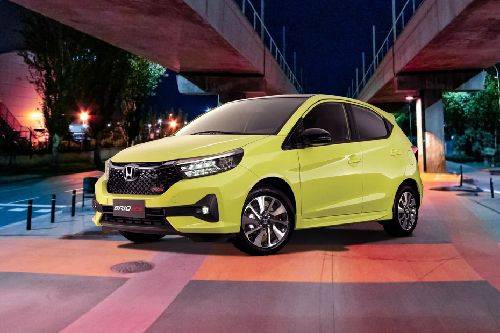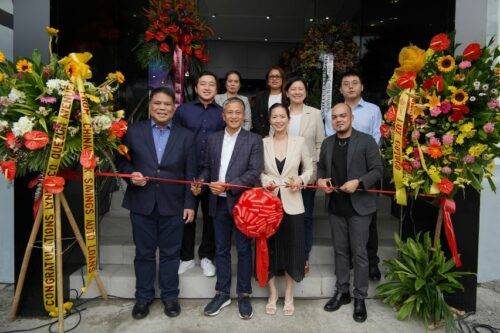Though safety tech, Honda envisions zero traffic fatalities involving its vehicles by 2050

MANILA: Honda Motor Co., Ltd. has officially unveiled the advanced future safety technologies that it is currently developing to establish a society wherein every road user is protected from the risk of traffic collisions and may enjoy the freedom of mobility with complete peace of mind.
KEY TAKEAWAYS
What are the two key technologies that will be used by Honda to achieve its objective of zero traffic collision fatalities involving Honda motorcycles and automobiles globally by 2050?
Honda will be using intelligent driver-assistive technologies and safe and sound network technology.What are the three values that Honda will offer with its next-generation driver assist technology?
The values that Honda will offer with its next-generation driver assist technology include operational assist (no driving operation errors), cognitive assist (no oversight/no prediction errors), and attentiveness assist (no errors due to daydreaming and careless driving).Honda will be using two key technologies to achieve its objective of “zero traffic collision fatalities involving Honda motorcycles and automobiles globally by 2050.” One is the world’s first “Intelligent Driver-Assistive Technology” powered by artificial intelligence (AI), which provides assistance tailored to each individual’s capability and situation to reduce driving errors and hazards, assisting the driver in achieving safe and sound driving. The other is “Safe and Sound Network Technology,” which uses telecommunications to connect all road users, both people and mobility products, allowing for the prediction of potential risks and assisting people in avoiding them before collisions actually occur.
Honda has been working on the research and development of safety technologies from both a hardware and software standpoint, with the goal of creating a collision-free society for everyone using the road, as reflected by the global safety slogan “Safety for Everyone.”
Honda will expand the launch of Honda Sensing 360, an omnidirectional safety and driver-assistive system, to all models that will go on sale in all key markets by 2030. Honda will also continue to strive to expand the application of a motorcycle detection feature and further strengthen the functions of its ADAS (advanced driver-assistance system).
Honda will also continue to advance in the application of motorcycle safety technologies and the provision of safety education technologies (Honda Safety EdTech). Honda’s goal with these measures is to cut the number of people killed in traffic collisions involving Honda motorcycles and cars by half by 2030.
To understand underlying reasons of driving errors that make the driver feel uneasy, Honda has also been conducting research and development of “technologies to understand people” with an original method that uses fMRI.
Aside from the technologies developed to understand human behavior and conditions, the “Intelligent Driver-Assistive Technology” also uses ADAS sensors and cameras to detect potential risks in the vehicle’s surroundings, allowing AI to determine driving risks. AI will simultaneously evaluate optimal driving behavior in real time and provide assistance tailored to each driver’s cognitive state and traffic situations.
Honda vowed to work hard to give the new value of “error-free” safety and peace of mind with the next-generation driver-assistive features currently under development, which are suited to each individual driver’s driving behavior and situation and keep them safe from any potential risks.
Honda aims to establish fundamental technologies in the first half of the decade and launch practical applications in the second half.
The “Safe and Sound Network Technology” will be developed to understand and identify each driver’s and road user’s situation and surrounding environment. Information regarding potential risks in the traffic environment will be pooled in the server through the communication network, and risks will be anticipated using a virtual representation of the traffic environment. The system will gather the most relevant support data, present it to each road user, and encourage them to take action to prevent potential risk before it actually occurs. Honda aims to accelerate industry-wide and public-private collaboration in the second half of the 2020s, with the goal of standardizing this technology.
To achieve a “collision-free” mobility society, Honda is working to create a “cooperative safety society,” in which everyone sharing the road is connected and coexists through the use of telecommunication technologies.
“Striving to completely eliminate mobility risks for everyone sharing the road, Honda will offer safety and peace of mind of each and every road user as a new value,” Honda R&D Co., Ltd. President and Representative Director Keljl Ohtsu stated. “Applying our future safety technologies which will embody such new value, Honda will work toward the realization of ‘zero traffic collision fatalities’ involving Honda motorcycles and automobiles globally by 2050. For the realization of a collision-free society where all road users care for each other and the freedom of mobility becomes possible, we will further accelerate our industry-wide and public-private initiatives.”
Image from Honda Motor Co., Ltd.
Also read: The 11th-gen Honda Civic is now here, priced from P1.29-M
Sell your car at the best price
 Verified and genuine buyers
Verified and genuine buyers
Honda Car Models
PIMS 2024
Trending & Fresh Updates
- Latest
- Popular
You might also be interested in
- News
- Featured Stories
Honda Featured Cars
- Latest
- Upcoming
- Popular
Latest Honda Car Videos on Zigwheels

Honda Car Articles From Carmudi
- journal























































